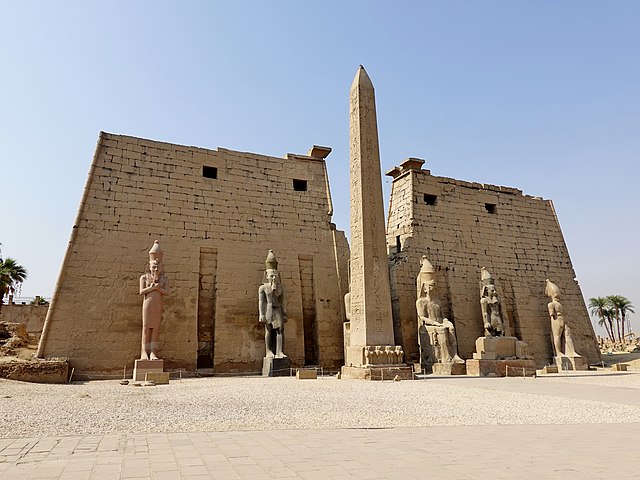A monolith is a geological feature consisting of a single massive stone or rock, such as some mountains. Erosion usually exposes the geological formations, which are often made of very hard and solid igneous or metamorphic rock. Some monoliths are volcanic plugs, solidified lava filling the vent of an extinct volcano.
Niapiskau island,limestone monoliths, Gulf of St. Lawrence, Mingan Archipelago National Park Reserve, Canada
Uluru, Northern Territory, Australia, is often referred to as the biggest monolith. While the surrounding rocks were eroded, the rock survived as sandstone strata making up the surviving Uluru 'monolith'.
Monolithos fortress on Rhodes, Greece
Landsat 7 image Brandberg Mountain, Namibia
An obelisk is a tall, four-sided, narrow tapering monument which ends in a pyramid-like shape or pyramidion at the top. Originally constructed by Ancient Egyptians and called tekhenu, the Greeks used the Greek term obeliskos to describe them, and this word passed into Latin and ultimately English. Though William Thomas used the term correctly in his Historie of Italie of 1549, by the late sixteenth century, Shakespeare failed to distinguish between pyramids and obelisks in his plays and sonnets. Ancient obelisks are monolithic and consist of a single stone; most modern obelisks are made of several stones.
One of the two Luxor Obelisks, on the Place de la Concorde in Paris; a red granite monolithic column, 23 metres (75 feet) high, including the base, which weighs over 250 metric tons (280 short tons).
Pylon of the Temple of Luxor with the remaining Luxor Obelisk in front (the second is today on the Place de la Concorde in Paris)
Obelisk of Pharaoh Senusret I, Al-Maalla area of Al-Matariyyah district in modern Heliopolis, Egypt
Tip of Hatshepsut's fallen obelisk, Karnak Temple Complex, Luxor, Egypt








